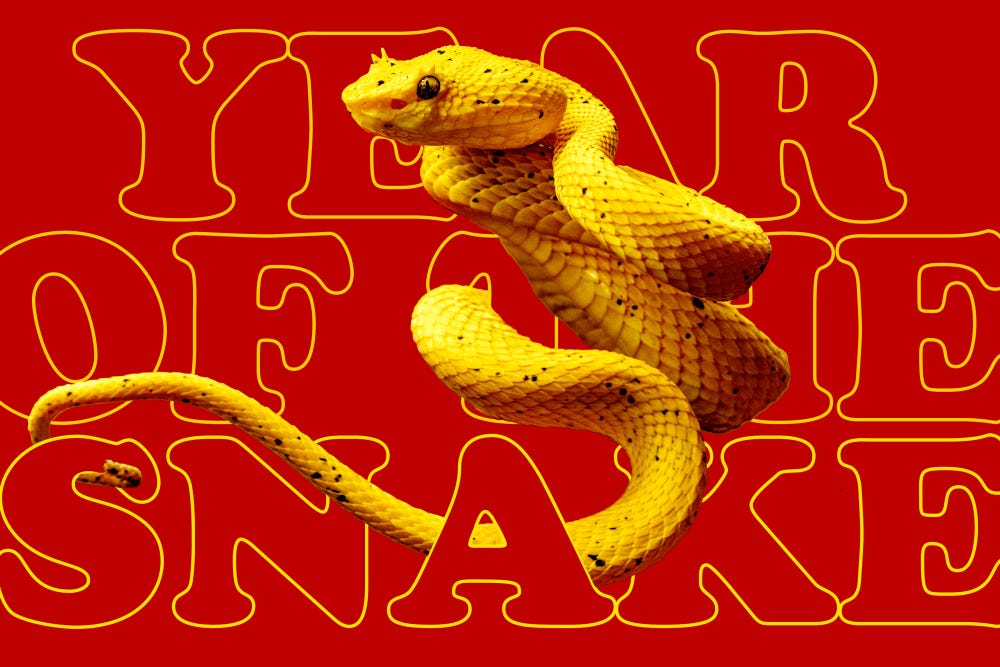The Year of the Snake: A Time for Shedding Negative Energy and Embracing New Beginnings
Lunar New Year ushers in a transformative year symbolized by the snake, encouraging personal growth and renewal.
The Year of the Snake has officially begun, ushering in a period focused on renewal, transformation, and shedding the negativity from the past.
Lunar New Year — celebrated across various cultures including Chinese New Year, Seollal in Korea, and Tet in Vietnam — began on January 29. This marks the start of a two-week celebration filled with festive gatherings, traditional customs, and abundant feasts.
Often referred to as the Spring Festival, this holiday signals the arrival of spring and the beginning of a new year on the Chinese lunisolar calendar.
While the snake may hold a negative connotation in some Western cultures, in the Eastern hemisphere, it is widely respected and revered. The Year of the Snake is seen as a time for significant personal and collective transformation, encouraging people to leave behind past baggage and embrace new opportunities.
Jonathan H. X. Lee, an expert in Asian and Asian American studies at San Francisco State University, explained that this year is about "shedding toxicity in personality, character traits, and letting go of the past—whether that be anger, love lost, or ego." Lee described this as a time for growth, both on an individual and societal level.
For many, the snake symbolizes the opportunity to engage in inner work, such as overcoming unrealistic expectations or breaking free from unhealthy habits. People born in the years of the snake (1941, 1953, 1965, 1977, 1989, 2001, 2013, and 2025) are often associated with intelligence, resilience, and the determination to achieve their goals, Lee noted.
"They possess an innate ability to think outside the box and overcome challenges, making them highly successful," Lee added.
This year specifically represents the wood snake, with the wood element carrying deep significance across major Chinese philosophies. In Daoism, wood symbolizes a return to one's true nature, while in Confucianism, it represents self-cultivation and refinement. Buddhism associates it with letting go in order to foster growth.
The snake’s positive qualities are rooted in folklore. One story from the creation of the Chinese zodiac tells of a four-legged, happy snake who became angry when other animals rejected him due to his appearance. Blaming the Jade Emperor for his fate, the snake's anger led to his transformation — losing his legs but gaining a more determined spirit. When the emperor announced a race to determine the zodiac’s order, the snake didn't win but placed sixth, earning his place among the zodiac animals for his perseverance and resolve.
In the process, the snake learned to manage his anger and was able to shed his old skin, symbolizing growth and the ability to let go of past resentments.
The snake is also linked to love, as seen in the "Legend of the White Snake," one of China's four great folktales. The story features an immortal white snake, disguised as a woman, who falls deeply in love with a man. When he dies after discovering her true identity, the snake’s love drives her to seek the mystical tree of immortality in hopes of bringing him back to life. Her journey, filled with sacrifice and cosmic love, emphasizes the eternal bond that transcends lifetimes.
“The snake, in this context, represents deep, enduring love,” Lee explained.
For those immersed in these cultural traditions, the snake embodies both the potential for personal evolution and a reminder of the powerful, transformative force of love. This Year of the Snake offers a unique opportunity to shed old burdens and make way for a more enlightened, balanced future.


